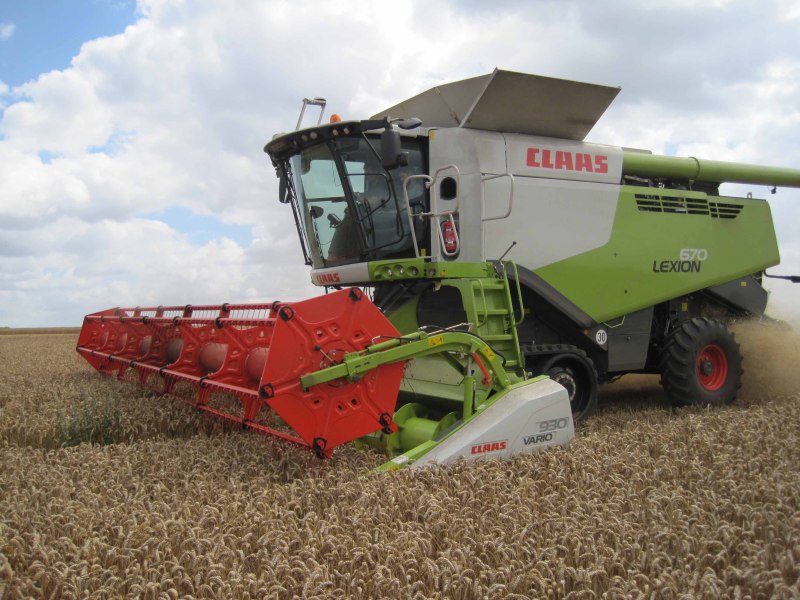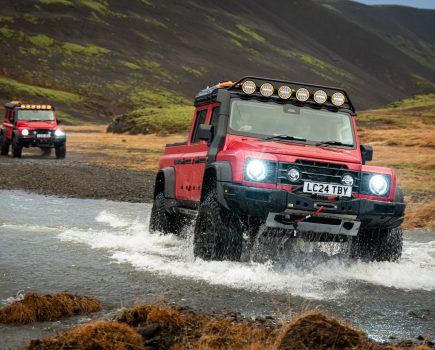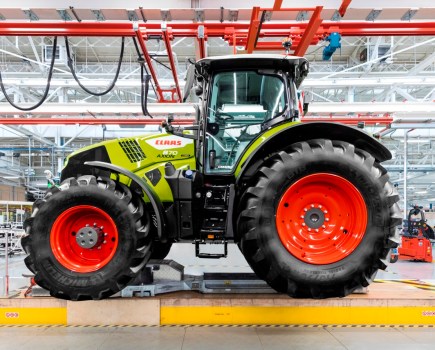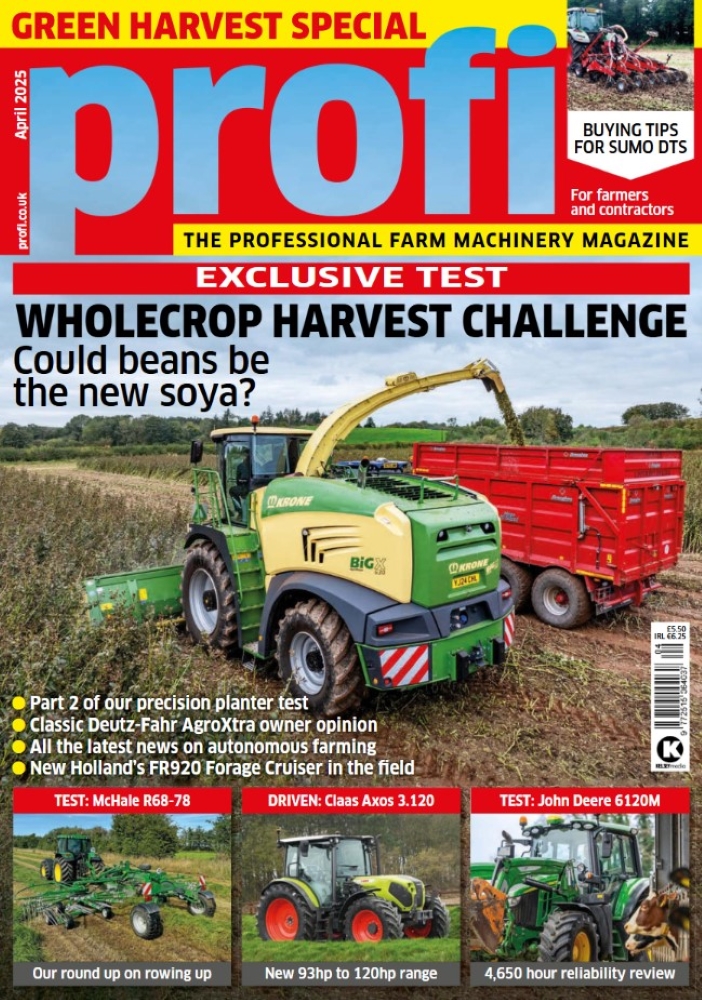With many UK and Irish farmers just starting to nibble away at this year’s wheat crops, Claas UK has already unveiled its new product offering for Harvest 2017. There are new straw-walker harvesters, round balers and large square balers, along with specification updates for existing machines.
Combines
Main news for the Lexion combine family is that the 600-series straw-walker machines — 620 (313hp, five-walker), 630 (354hp, five-walker), 650 (354hp, six-walker), 660 (408hp, six-walker) and 670 (435hp, six-walker) — gain many of the features debuted last year on the 700 rotary hybrid models. These include items such as Dynamic Cooling — a variable fan drive, with air drawn in from on top of the machine and blown out through grids along the side — plus a lengthy list of optional automated control systems: Auto Crop Flow Control (sensors monitor shaft speeds and auto stop crop intake if they detect a blockage); Auto Slope Control (automatically slows fan speed when the combine is working uphill and vice versa when travelling downhill); and Cemos Automatic Cleaning, which automatically adjusts the sieves and fan speed to achieve the best possible grain sample.
At the rear of the three six-walker machines there’s also a new chopper and radial spreader. Chopper drum width and length are increased to keep straw within the unit for longer to produce a finer chop, while the spreader, as on the 700 models, is now mechanically driven at a fixed speed for a more consistent material throw.
Claas aficionados will have spotted slight variations in the power outputs mentioned above when compared with the current 600s, a result of the company’s switch from Caterpillar to Stage IV-compliant Mercedes MTU engines: OM470 in the 660/670; OM936 in 620/630/650. Though the power ratings are slightly down on some models, Claas maintains that this is more than countered by the MTU motors’ higher torque stats across the complete line-up.
Last up on the 600s, it’s worth noting that there are now two models available with Terra Tracs. Previously there was just the one tracked 600, the 670 TT, but this is now joined by a smaller 660 TT. Refusing to be ignored, the flagship Lexion 700s also benefit from a number of tweaks to their spec, in the main to make them better suited to Controlled Traffic Farming (CTF) systems. For example, there is now a 7XL unloading auger with a full 12m reach for use in tandem with the 12.3m Vario 1230 header, while the existing 4XL auger is provided with a more appropriate mate in the form of the new 10.8m Vario 1080 header (the 1080 replaces the current 10.5m Vario 1050). And on the subject of headers, Claas has dramatically reduced the time required to switch between rape and cereal cutting modes on the new cutterbars through the introduction of integrated filler plates and quick-couple/slot-in side knives (no tools required). Change-over time is said to be down from 30mins to 5mins.
Large square balers
It’s all change in 2017 for the Quadrant line-up, with the current 2200 (120cm x 70cm bale), 3200 (120 x 70cm) and 3300 (120 x 90cm) ranges due to be replaced by 4200, 5200 and 5300 machines, respectively. OK, so it’s not all change, as the existing Quadrant 4000 (80cm x 50cm) and 2100 (80cm x 70cm) models remain unaffected.
So, back to those changes. It’ll come as no surprise to learn that they’re all geared towards further hiking outputs and bale densities, with increases to bale chamber length (+15% on 4200, +11% on 5200/5300), packer clutch torque limit (+29% on 5200, +12% on 5300) and ram stroke frequency (+10% on 5200), and a general beefing-up of all the drivelines.
The six knotters are strengthened and uprated, too, and also get a new, more powerful cleaning package. At the front end, an intriguing addition is the option of hydraulic drive for the pick-up reel, double crop roller and Power Feeding System (PFS) auger. This allows the operator to alter the pick-up speed according to crop (eg slower for the more delicate handling of leafy hay or faster for the highest outputs in light straw), and in the event of a blockage there’s the ability to spit out the offending lump by reversing both the auger and press.
But arguably the new Quadrants’ star turn is Automatic Pressure Control (APC), which automatically maintains the target chamber pressure and, as a result, the bale weight by monitoring the knotter tension and the stress on the baler’s drive system. And those same knotter sensors (plus three more) are used by the Knotter Control System (KCS) to detect broken strings etc. Both APC and KCS are optional on the 4200, standard on 5200 and 5300.
Round balers
Which leaves the new round balers — or, to be more precise, the new Variant variable-chamber round balers. What is currently the Variant 300 series becomes the Variant 400 series for Harvest 2017. Firstly, what stays the same? There are still four models: two 0.90m to 1.55m bale diameter machines (the 460RF Roto Feed and 465RC Roto Cut); and two 0.90m to 1.80m bale diameter models (480RF and 485RC). And the differences? As with the updated Quadrants, the changes are all largely aimed at improving crop flow, outputs and reliability.
So, there’s a new dual roller crop press over the 2.35m wide pick-up on all models to even out crop flow and allow faster travel, while the RCs incorporate a new design of star rotor, again for a smoother feed particularly in wetter crops. The main frame, bale chamber and tailgate have all been strengthened, and the net spreading system now has a stainless steel feed-in plate (rather than rubber), along with the welcome option of an extra wide netting trough for those operators who prefer to use the shoulder-covering 1.3m wide net.












